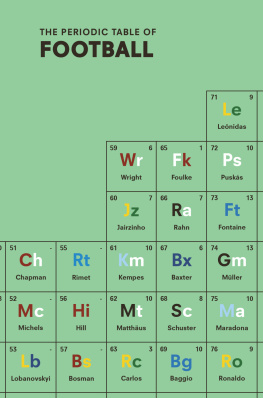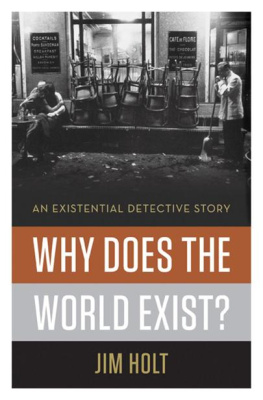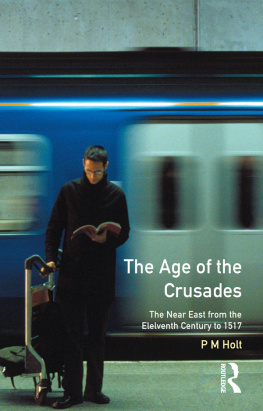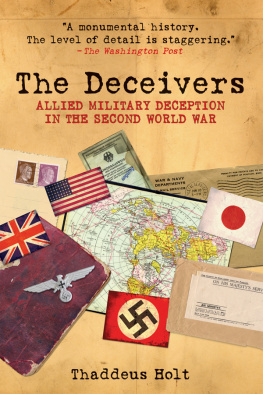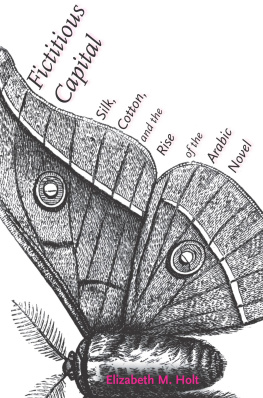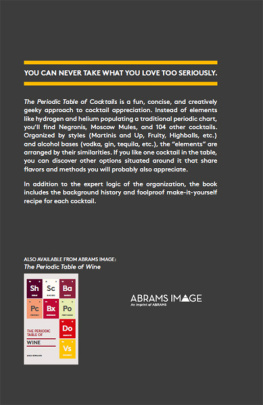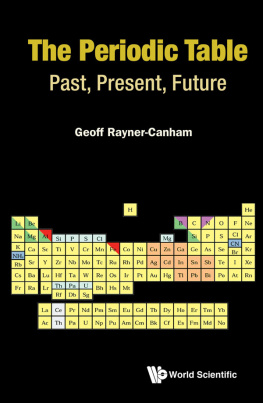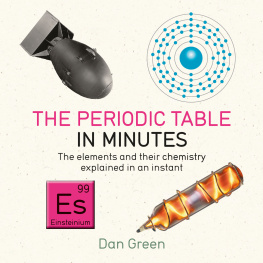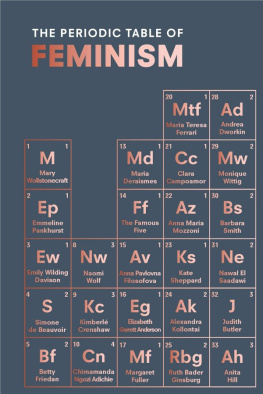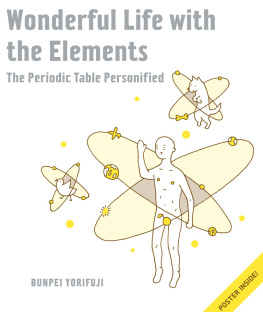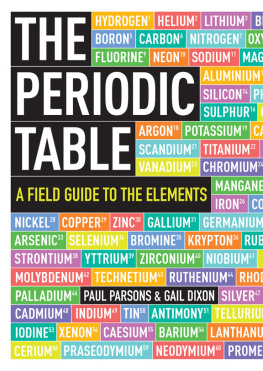Holt - The Periodic Table of Football
Here you can read online Holt - The Periodic Table of Football full text of the book (entire story) in english for free. Download pdf and epub, get meaning, cover and reviews about this ebook. City: London, year: 2016, publisher: Ebury Press, genre: Non-fiction. Description of the work, (preface) as well as reviews are available. Best literature library LitArk.com created for fans of good reading and offers a wide selection of genres:
Romance novel
Science fiction
Adventure
Detective
Science
History
Home and family
Prose
Art
Politics
Computer
Non-fiction
Religion
Business
Children
Humor
Choose a favorite category and find really read worthwhile books. Enjoy immersion in the world of imagination, feel the emotions of the characters or learn something new for yourself, make an fascinating discovery.
- Book:The Periodic Table of Football
- Author:
- Publisher:Ebury Press
- Genre:
- Year:2016
- City:London
- Rating:5 / 5
- Favourites:Add to favourites
- Your mark:
- 100
- 1
- 2
- 3
- 4
- 5
The Periodic Table of Football: summary, description and annotation
We offer to read an annotation, description, summary or preface (depends on what the author of the book "The Periodic Table of Football" wrote himself). If you haven't found the necessary information about the book — write in the comments, we will try to find it.
The Periodic Table of Football — read online for free the complete book (whole text) full work
Below is the text of the book, divided by pages. System saving the place of the last page read, allows you to conveniently read the book "The Periodic Table of Football" online for free, without having to search again every time where you left off. Put a bookmark, and you can go to the page where you finished reading at any time.
Font size:
Interval:
Bookmark:
Nick is the author of numerous books on football and other sports, and numerous highly rated quiz books on a variety of topics. He also writes fiction under a different name. Nick lives with his wonderfully supportive wife, (also Nic!) and their cats in Hastings.
You can never take what you love too seriously and The Periodic Table of Football celebrates this fact.
Instead of hydrogen to helium, here youll find Pel to Sepp Blatter 108 elements from the football pantheon arranged by their properties and behaviour on and off the pitch.
This expert guide spans over 150 years to offer an original perspective of the beautiful game.
FOOTBALL


We begin with those priceless elements, the Precious Metals: the ones over which wars are fought and vast amounts of money change hands.
These are the stars in the footballing firmament, the jewels in the crown. They are players who are worshipped in some quarters, loved in most and respected even where they left heartbreak and loss. Add any of these players to an already very good team and you have potential world champions.


Quite simply, Edson Arantes do Nascimento Pel as he is more commonly known is the best player the game has ever seen. Modern pundits might claim this title for Lionel Messi, and Messis accomplishments for Barcelona in Spain and in the Champions League are very special, but to be considered the greatest player the game has seen, surely a footballer must make a similar impact at international level?
Pel first won the World Cup with Brazil as an exciting and flamboyant teenage prodigy in 1958. In 1962, Brazil won it again though Pel missed most of the tournament through injury while, in 1966, the opposition were merciless and an underperforming side let him down. It wasnt until the 1970 tournament, now positioned as a wily playmaker behind a resourceful centre forward (Tosto), that Pel showed his true genius. His range of passing and vision during that tournament were exceptional, and he still retained much of the power and aerial spring of his youth. He looked exactly what he was the complete footballer.
Not only was Pel a great player and athlete but he did it all with graciousness and charm. He never complained when he was targeted by the hard men; he just picked himself up and got on with it. (And usually got his revenge in the best way, by scoring, and winning).
Seventy-seven goals in ninety-two matches for Brazil was some record for a player who was never truly a natural striker. Pel wore the number-ten shirt in all those games and he became indelibly associated with that number commentators first started talking about the No.10 position in reference to Pels role just behind the centre forward. Others have filled the shirt with enormous distinction and craft but Pel will always be THE number ten. Come on, Lionel, step up in 2018, youve only got one more chance
There is one thing he isnt good at punditry. If Pel rates your teams chances, dont bother watching: this is the man who predicted, among others, Colombia would win the 1994 World Cup (they finished bottom of their first-round group).

For a while, a brief while in the early 1950s, Millonarios of Bogot in Colombia could lay reasonable claim to be the strongest club side in the world. Not that they had many Colombians in the side. Most of the team were Argentinian exiles playing abroad because of a long-running footballers strike in their home country. Among them was Alfredo Di Stfano, a young Argentinian international; with Di Stfano and Adolfo Pedernera playing inside forward, Millonarios had flair in abundance.
The success of the Colombian club attracted European scouts: Real Madrid liked what they saw and lured Di Stfano to Europe. Two years after he arrived, the European Cup was played for the first time and Real Madrid dominated the early years: they won the first five finals, with Di Stfano playing and scoring in every one. In 1958, Real won 3-2 against a Milan side containing Nils Liedholm, the Argentinian Grillo and the legendary Uruguayan centre forward Schiaffino. In 1960, Di Stfano scored a hat-trick in the 7-3 mauling of Eintracht Frankfurt at Hampden Park (though he was more than matched by Ferenc Pusks, who scored four).
Argentina declined to enter the World Cup in 1950 and 1954, and Di Stfano was persuaded to take Spanish nationality in 1956. A dropped point against Switzerland cost Spain its qualification for the 1958 tournament (Scotland won the group) and although Di Stfano, now thirty-seven and apparently injured, was named in Spains squad for Chile in 1962 he failed to make an appearance. Rather oddly, the dual international made a handful of appearances as a guest for Colombia in 1962.
Di Stfano was a complete player Bobby Charlton rates him as the best he saw. Operating as an inside forward or a deep-lying centre forward he had strength, balance and stamina to go with his silky South American skills and tricks and he was a deadly finisher.
Di Stfano is often cited as the best player never to play in a World Cup. He heads a small but illustrious group of such players never to grace the tournament: Adolfo Pedernera, Eduard Streltsov, George Best, Abedi Pele, Jari Litmanen, George Weah and Ryan Giggs also spring to mind, as well as one or two whose absence was self-imposed, like Eric Cantona and Bernd Schuster. One or two were denied for more tragic reasons, like the ill-fated Duncan Edwards and Valentino Mazzola.

It was well into the twentieth century before an African footballer imposed himself on the world game. That player was Portugals brilliant striker, Eusbio.
At the 1966 World Cup Finals, the pre-tournament favourites were hosts England, holders Brazil and the fast-improving West German team. No one gave Portugal much of a chance: despite the presence of the talented Benfica forward line they were deemed unlikely to make it out of a group containing Brazil and a talented Hungarian side. As it transpired, Brazil were a disappointment while Portugal won all three of their games with ease.
The Portuguese star was Mozambique-born Eusbio, a striker of electrifying pace with a ferocious shot from either foot. After a quiet start he clicked in the third group game against Brazil, scoring twice to eliminate the holders and setting up a quarter-final against the tournaments surprise package, North Korea. A complacent Portugal found themselves 3-0 down before Eusbio provided some much needed inspiration. His pace and skill were too much for the Koreans, and he scored four times, including twice from the penalty spot.
Font size:
Interval:
Bookmark:
Similar books «The Periodic Table of Football»
Look at similar books to The Periodic Table of Football. We have selected literature similar in name and meaning in the hope of providing readers with more options to find new, interesting, not yet read works.
Discussion, reviews of the book The Periodic Table of Football and just readers' own opinions. Leave your comments, write what you think about the work, its meaning or the main characters. Specify what exactly you liked and what you didn't like, and why you think so.

